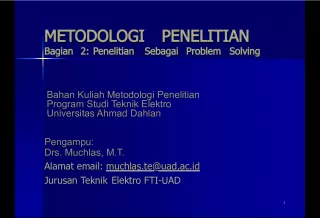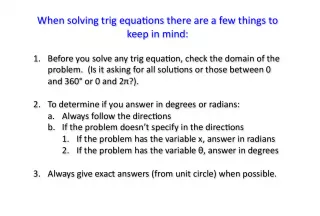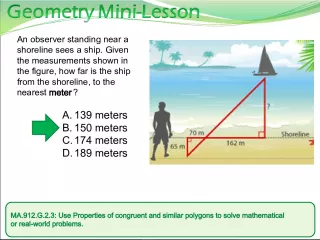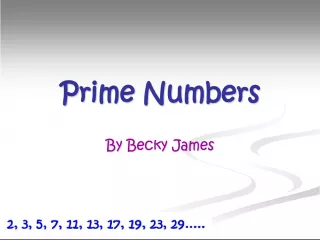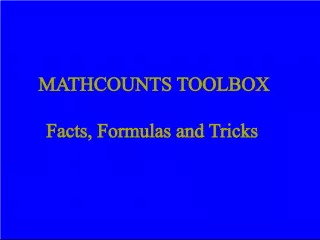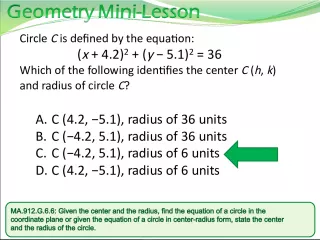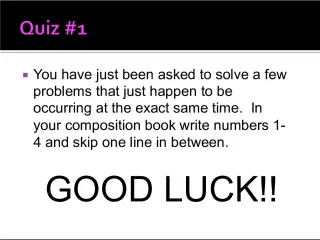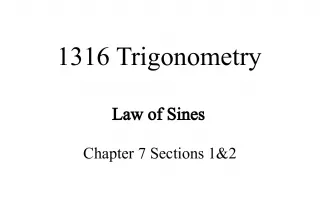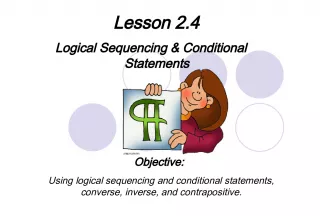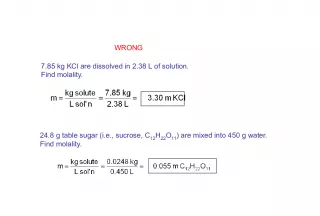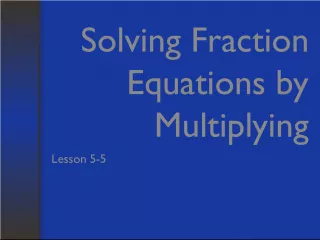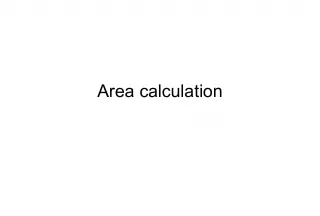Prime Time Problem Solving: Finding the Longest String
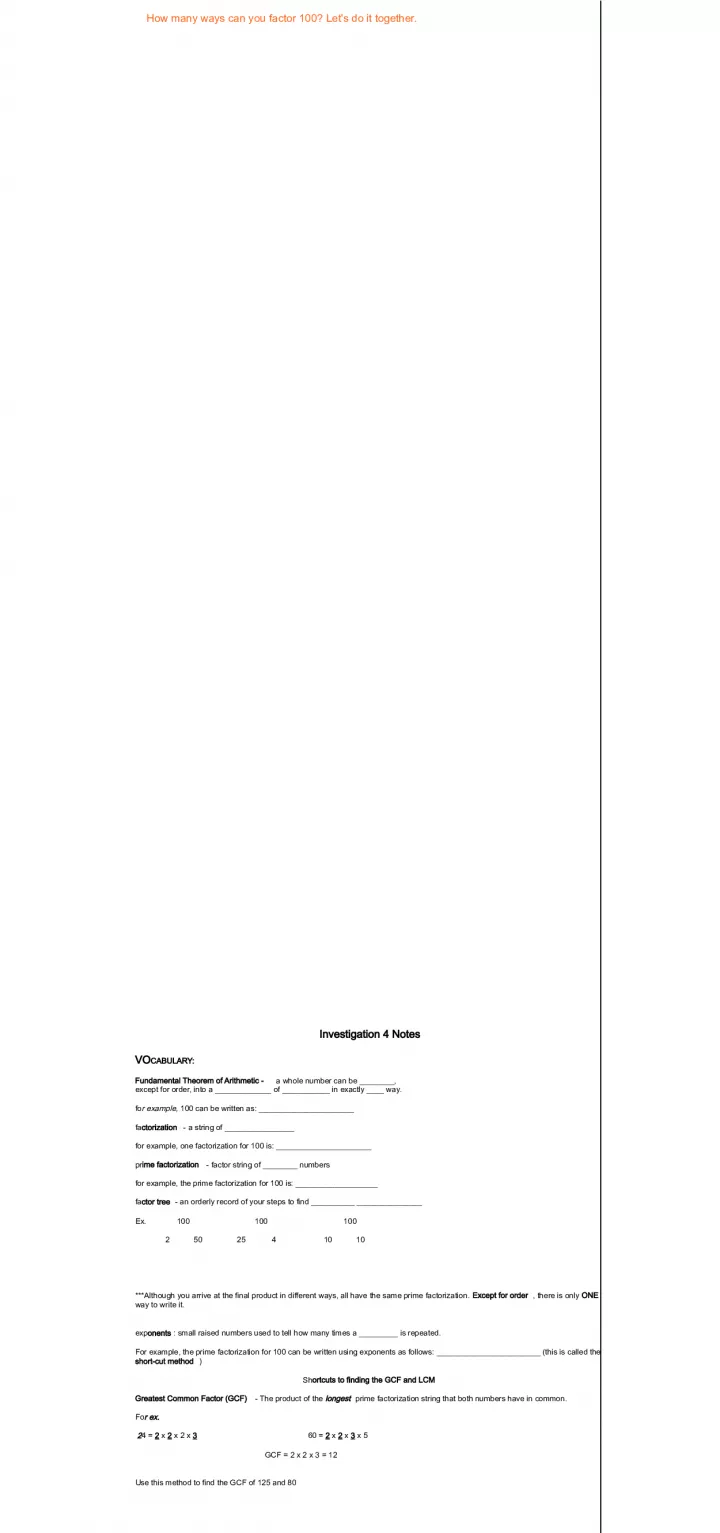

Learn how to find the longest string in a prime factorization puzzle using these strategies and tips. Discover the importance of prime numbers in determining the longest possible string.
- Uploaded on | 0 Views
-
 louvenia
louvenia
About Prime Time Problem Solving: Finding the Longest String
PowerPoint presentation about 'Prime Time Problem Solving: Finding the Longest String'. This presentation describes the topic on Learn how to find the longest string in a prime factorization puzzle using these strategies and tips. Discover the importance of prime numbers in determining the longest possible string.. The key topics included in this slideshow are prime numbers, factorization, puzzle solving, longest string, mathematics,. Download this presentation absolutely free.
Presentation Transcript
3. Prime Time Problem 4.1 Answers A. ) Answers will vary, but the longest string in the puzzle is: 2 x 2 x 2 x 3 x 5 x 7. B.) It is not possible to find a longer string than is in the puzzle. The longest possible string is 2 x 2 x 2 x 3 x 5 x 7. C.) Some strings can be broken down further to get longer strings. For example 420 x 2 can be split up into 210 x 2 x 2. D.) If all the numbers in a string are prime, the string is the longest possible. E.) Except for order, every whole number has exactly one longest string.
4. How many ways can you factor 100? Let's do it together.
5. Investigation 4 Notes VO CABULARY: Fundamental Theorem of Arithmetic - a whole number can be ________, except for order, into a _____________ of ___________ in exactly ____ way. fo r example, 100 can be written as: ______________________ fa ctorization - a string of ________________ for example, one factorization for 100 is: ______________________ pr ime factorization - factor string of ________ numbers for example, the prime factorization for 100 is: ___________________ fa ctor tree - an orderly record of your steps to find __________ _______________ Ex. 100 100 100 2 50 25 4 10 10 ***Although you arrive at the final product in different ways, all have the same prime factorization. Except for order , there is only ONE way to write it. exp onents : small raised numbers used to tell how many times a _________ is repeated. For example, the prime factorization for 100 can be written using exponents as follows: ________________________ (this is called the short-cut method ) Sh ortcuts to finding the GCF and LCM Greatest Common Factor (GCF) - The product of the longest prime factorization string that both numbers have in common. Fo r ex. 2 4 = 2 x 2 x 2 x 3 60 = 2 x 2 x 3 x 5 GCF = 2 x 2 x 3 = 12 Use this method to find the GCF of 125 and 80 Least Common Multiple (LCM) - The product of the shortest prime factorization string that both numbers have in common. 24 = 2 x 2 x 2 x 3 60 = 2 x 2 x 3 x 5 LCM = 2 x 2 x 3 x 2 x 5 = 120 Use this method to find the LCM of 125 and 80
6. Investigation 4 Notes - Answer VO CABULARY: Fundamental Theorem of Arithmetic - a whole number can be factored , except for order, into a product of primes in exactly one way. fo r example, 100 can be written as: 2 x 2 x 5 x 5 fa ctorization - a string of factors fo r example, one factorization for 100 is: 2 x 25 x 2 pr ime factorization - factor string of prime numbers for example, the prime factorization for 100 is: 2 x 2 x 5 x 5 fa ctor tree - an orderly record of your steps to find prime factorization Ex . 100 100 100 2 50 25 4 10 10 2 25 5 5 2 2 2 5 2 5 5 5 ***Although you arrive at the final product in different ways, all have the same prime factorization. Except for order , there is only ONE way to write it. exp onents : small raised numbers used to tell how many times a factor is repeated. For example, the prime factorization for 100 can be written using exponents as follows: 2 x 5 (this is called the short-cut method (using exponential notation ) Sh ortcuts to finding the GCF and LCM Greatest Common Factor (GCF) - The product of the longest prime factorization string that both numbers have in common. Fo r ex. 2 4 = 2 x 2 x 2 x 3 60 = 2 x 2 x 3 x 5 GCF = 2 x 2 x 3 = 12 Use this method to find the GCF of 125 and 80 125 = 5 x 5 x 5 80 = 5 x 2 x 2 x 2 GCF = 5 Least Common Multiple (LCM) - The product of the shortest prime factorization string that both numbers have in common. 24 = 2 x 2 x 2 x 3 60 = 2 x 2 x 3 x 5 LCM = 2 x 2 x 3 x 2 x 5 = 120 Use this method to find the LCM of 125 and 80 125 = 5 x 5 x 5 80 = 5 x 2 x 2 x 2 LCM = 5 x 5 x 5 x 2 x 2 x 2 = 1,000
14. Prime Time Problem 4.2 Answers A. ) From the pictures that we draw, we can read that 100 = 2 x 2 x 5 x 5. This string is a factorization of 100 into prime numbers. We now know (from Problem 4.1) that there is only 1 prime factorization for a number. Therefore, we call it the factorization instead of a factorization. B.) 72 = 2 x 2 x 2 x 3 x 3 120 = 2 x 2 x 2 x 3 x 5 600 = 2 x 2 x 2 x 3 x 5 x 5 C.) 72 = 2x 3 120 = 2x 3 x 5 600 = 2x 3 x 5 D1.) Answer may vary - example will use 9. 72 = 3 x 3 x 2 x 2 x 2 D2.) You could circle the other factors left in the factorization. 72 = 3 x 3 x 2 x 2 x 2 2 x 2 x 2 = 8 so 9 is paired with 8. E.) Many possible answers. Example will use the multiple 144. Prime factorization of 72 = 3 x 3 x 2 x 2 x 2 Prime factorization of 144 = 3 x 3 x 2 x 2 x 2 x 2 The only difference is another factor of 2 is included because 144 is the second multiple of 72. Accordingly, every prime factorization for a multiple of 72 will contain the prime factorization of 72 in it.
15. Pull Pull Way to Go! Make a Prime Factorization Tree 30 Hel p The last number on each arrow should be a prime number. Prime numbers are circled in black. Answer 2 x 15 3 x 5 2 x3x5 Draw arrows and write the factors for the number until the factors are all prime numbers. Then Check your answers.
16. Pull Pull Way to Go! Make a Prime Factorization Tree 84 Hel p The last number on each arrow should be a prime number. Prime numbers are circled in black. Answer 2 x 42 6 x 7 2 x 3 2x 2x3x7 Draw arrows and write the factors for the number until the factors are all prime numbers. Then Check your answers.
17. Pull Pull Way to Go! Make a Prime Factorization Tree 63 Hel p The last number on each arrow should be a prime number. Prime numbers are circled in black. Answer 3 x 21 3 x 7 3 x3x7 Draw arrows and write the factors for the number until the factors are all prime numbers. Then Check your answers.
18. Pull Pull Way to Go! Make a Prime Factorization Tree 91 Hel p The last number on each arrow should be a prime number. Prime numbers are circled in black. Answer 91 x 1(IS NOT a prime #) 9 1 is a prime number Draw arrows and write the factors for the number until the factors are all prime numbers. Then Check your answers.
19. Pull Pull Way to Go! Make a Prime Factorization Tree 128 Hel p The last number on each arrow should be a prime number. Prime numbers are circled in black. Answer 2 x 64 8 x 8 2 x 4 2 x4 2 x 2 2 x 2 2x2x2x2x2x2x2 Draw arrows and write the factors for the number until the factors are all prime numbers. Then Check your answers.


